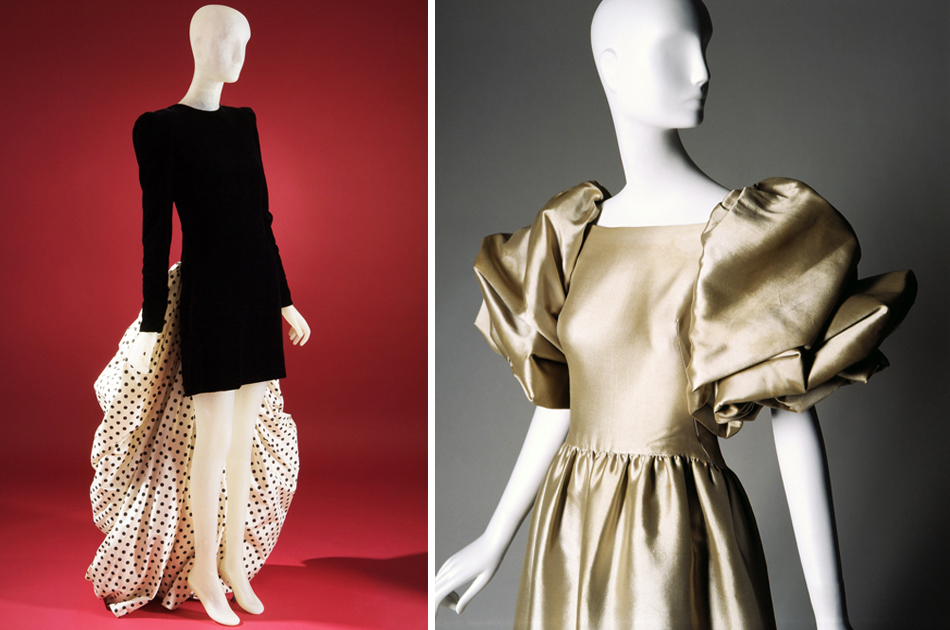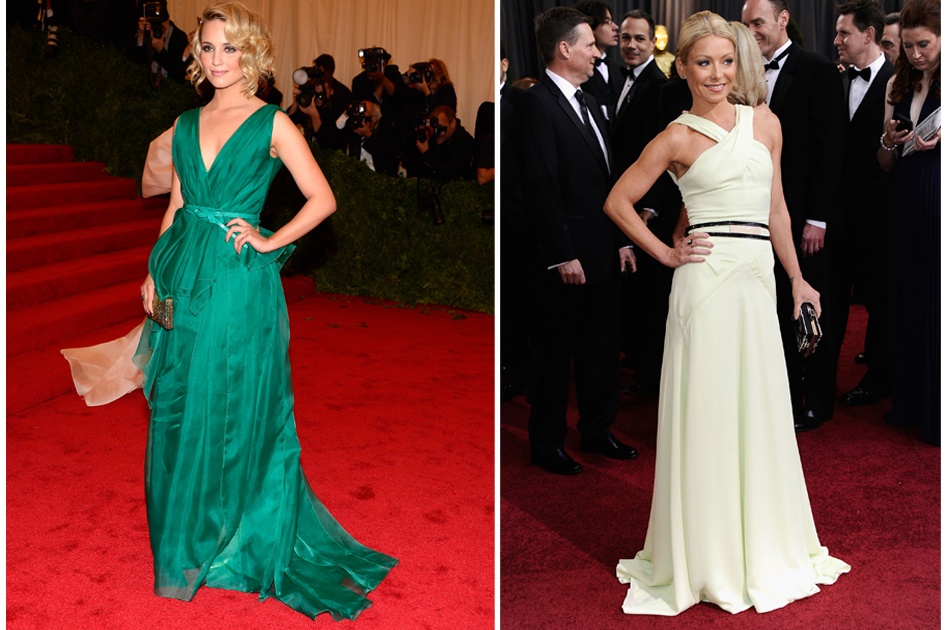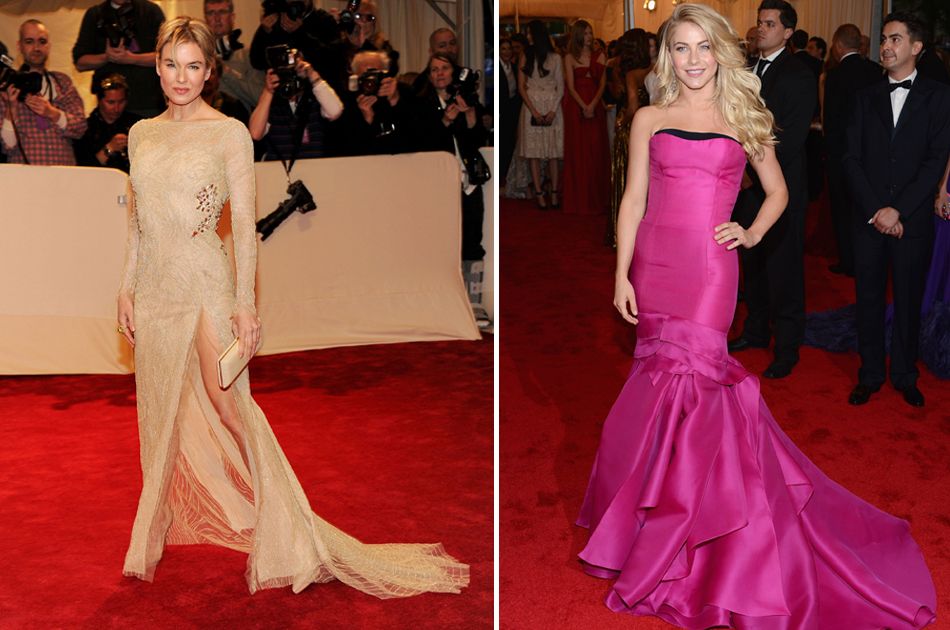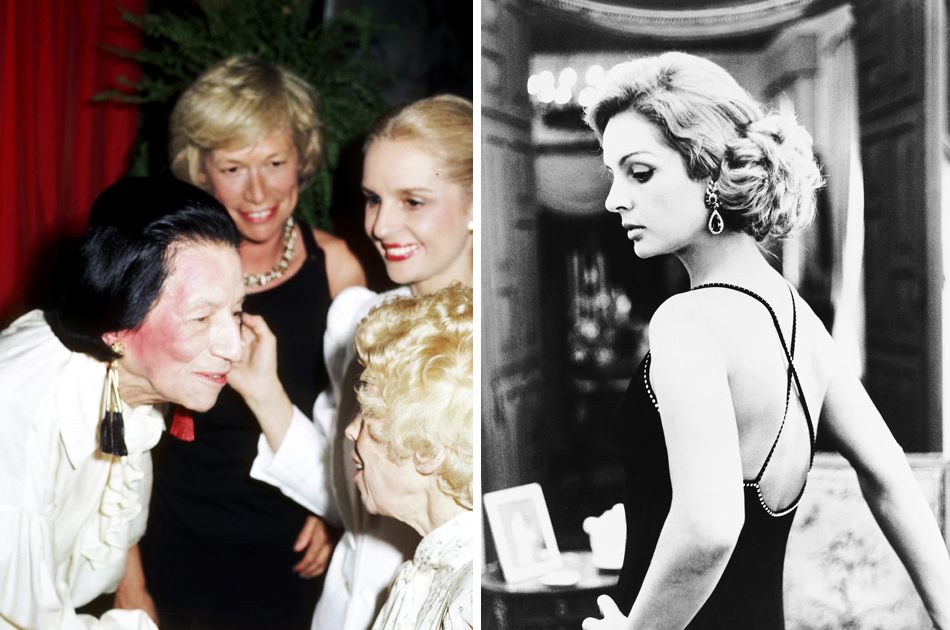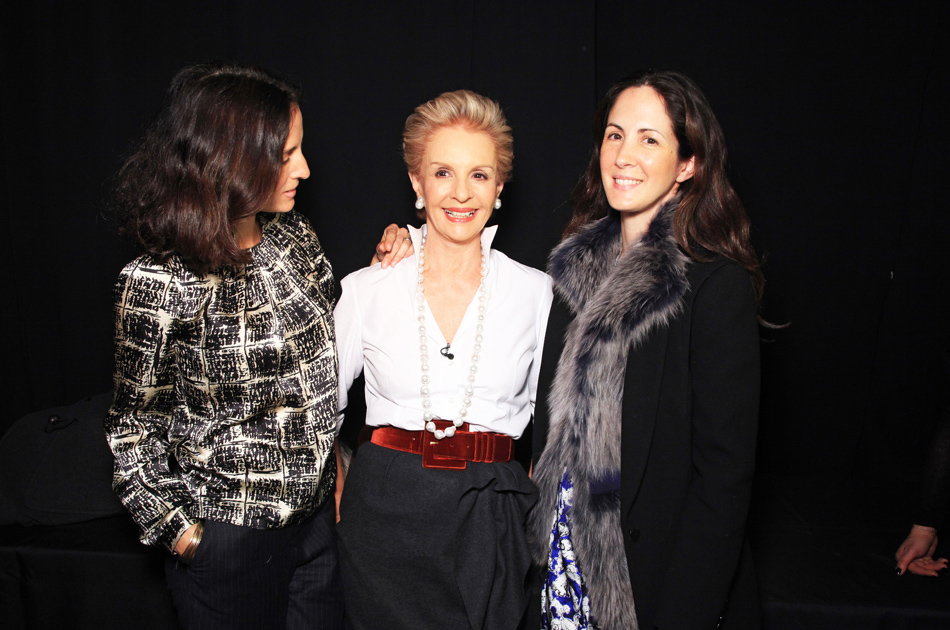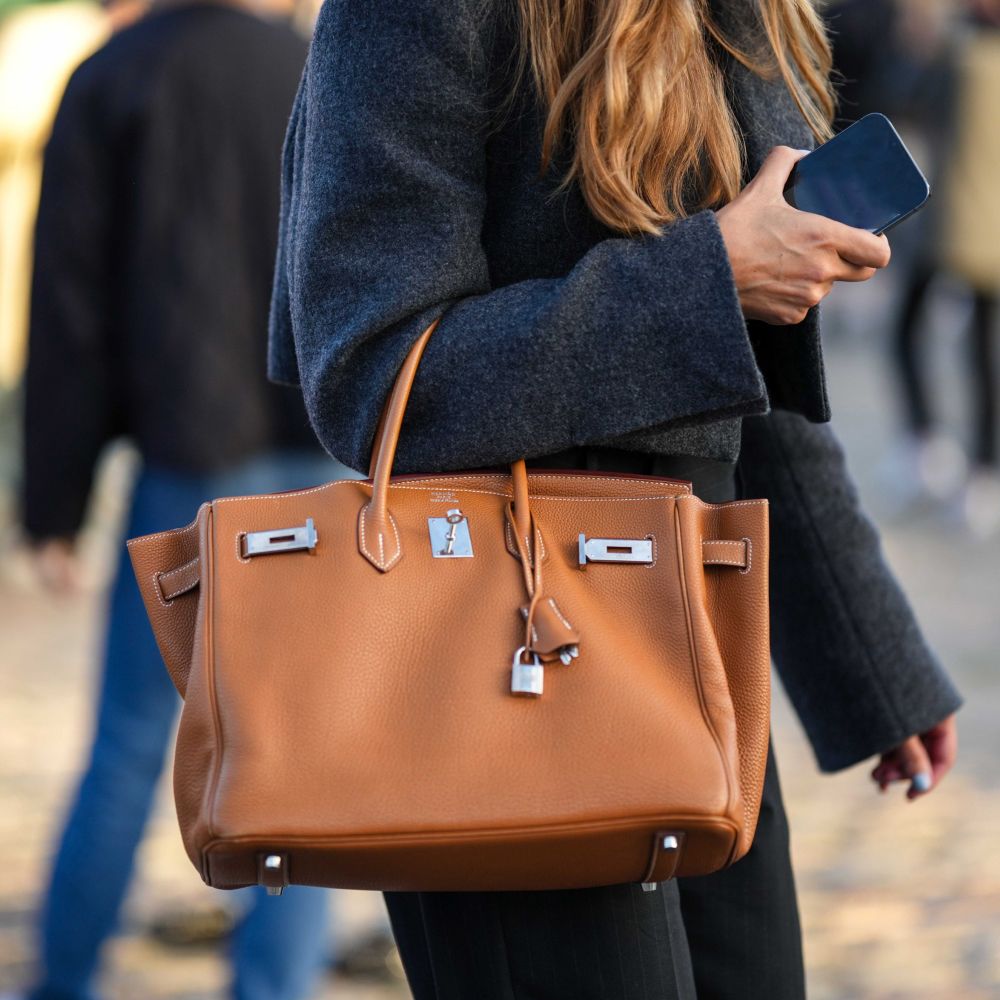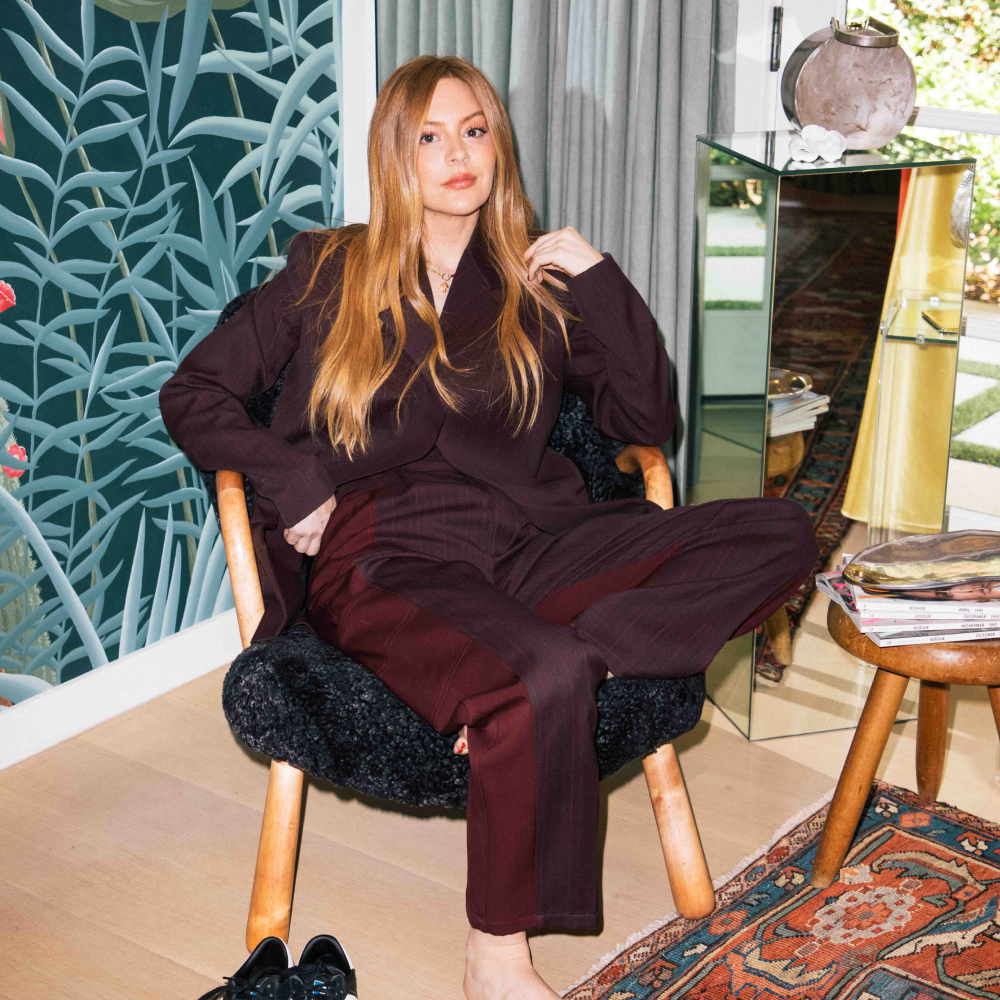
September 5, 2012The Venezuelan-American designer Carolina Herrera didn’t even know how to sew before embarking on a career in fashion in 1981. “What I understood was proportion, and I had a good eye,” she says. Top: A navy cocktail dress and a coat and slacks from her Fall 2012 collection. All images courtesy of Carolina Herrera
First things first: the white blouse, Carolina Herrera’s signature article of apparel, usually in cotton and occasionally in silk taffeta. Why would America’s First Lady of Fashion choose to wear something so simple and, some might say, so basic? Answer: for those very reasons. “It is my security blanket,” says Herrera, “which goes back to my childhood in Venezuela. The white cotton blouse with the Peter Pan collar was part of my school uniform. And it was what I wore when I rode horses.”
Herrera and I are having lunch at the Lambs Club in the Chatwal Hotel on West 44th Street, smack in the middle of New York’s theater district. It is a suffocatingly hot day in July and the restaurant’s decibel level is high, but Herrera, wearing her latest you-know-what over a navy-blue skirt from her CH collection, looks as crisp, composed and chic as ever.
Style, that elusive je ne sais quoi, is often hard-won, acquired over years of experimentation and missteps. Precious few are born with it. Carolina Herrera may well be one of them. And if she wasn’t born with it, she was most assuredly born into it, raised by wealthy and refined women in the most rarefied of circumstances in Caracas, Venezuela. Her mother and her grandmother were both perfectly put together, had their own dressmakers — even a live-in seamstress. Everything within Herrera’s reach at home was of the utmost quality. Hers was a privileged life, and no one appreciates that fact more than she. “I was very lucky to be surrounded by beautiful things, interesting people with grace and manners and an appreciation for literature, art and culture,” she says.
She brought that aesthetic to her first collection in 1981, encouraged by éminence grise Diana Vreeland, then the editor in chief of Vogue. Herrera was initially interested in designing textiles. It was Vreeland who planted the fashion seed. When it took root, Herrera returned to Caracas, and with the help of Guy Mellier, her personal couturier, she came up with a collection she felt was New York–ready. She never studied fashion and didn’t know how to cut or sew. “What I understood was proportion, and I had a good eye.” She knew not only what looked good on her but also on other women, too.

Left: Herrera has built a fashion empire based on her signature crisp, elegant style, as exemplified here in a look from her Night collection, which is composed of classic formal pieces. Right: A bright look from Herrera’s Resort 2013 collection.
Not everyone thought Herrera could survive, much less thrive in the savage world of Seventh Avenue. When she told Halston of her plans, he exclaimed, “Are you out of your mind?” The fashion press was skeptical and wondered aloud if she was simply dabbling in design, whether she’d do it for a year or two, then return to her charmed life — her Venezuelan husband and four daughters, her posh Manhattan townhouse and her circle of ultra-sophisticated friends.

The designer, photographed by the legendary Norman Parkinson at her Caracas home in 1970.
Herrera fooled them all, and perhaps even surprised herself. She’s now been at it for more than 30 years, built a thriving business that includes fragrances and accessories, freestanding stores and strong relationships with Saks Fifth Avenue, Neiman Marcus, Bergdorf Goodman and other department stores. Along the way she launched a line called CH, which is a less expensive (although hardly cheap) lifestyle brand appealing to both men and women. Two of her daughters, Carolina Herrera Baez, and Patricia Herrera Lansing — her children with second husband Reinaldo Herrera, to whom she’s been married for more than 40 years — work with her. The other two, Mercedes and Ana Luisa, are from her first marriage. They all get along, protect each other and have given their mother 12 grandchildren and two great-granddaughters (so far).
Herrera is known for her high standards and her dismissal of fads and followers. “I like the girls who aren’t afraid to mix what they wear, who aren’t all in the same dress and who don’t use a stylist,” she explains. “If they like something, they wear it.” Which is exactly the way Herrera was when she was growing up.
As for the now-common practice of borrowing clothes from a designer to wear at a red-carpet event, she strongly disapproves. “I never wore a dress that was on loan.” But even more practically, she believes that if a designer lends someone a dress, “you can be sure that it will not sell.” This, by the way, goes against the theory that if a famous woman — Angelina Jolie, the Duchess of Cambridge, Michelle Obama, for example — is seen wearing a particular designer’s creation, her fans will want it.
Then again, the Carolina Herrera customer is different: Sometimes she is renowned, such as Jackie Onassis (“she knew exactly what looked good on her”) and more recently Renée Zellweger (“she never uses a stylist”), but even more often she is an affluent and discriminating woman of the world with a particular look — elegant rather than eccentric, clean rather than cluttered. “Simplicity and elegance hold hands,” Herrera is fond of saying. “At Carolina Herrera, we have to be consistent. We can’t confuse our clients or the public. Also, I like my clothes to be very ‘finished’ — as well made on the inside as on the outside. Some women don’t care if something is well made or not.” But those women are not her customers.
“Do you know what elegance is? It is not only what you’re wearing, it is how you wear it, who you are inside. It is the way you decorate your house, what you surround yourself with, what books you read and what your interests are.”
She unveiled her first collection at the Metropolitan Club on Fifth Avenue. The fashion press was hard on her; “they didn’t have faith,” is how she explains it today. But how about the women in the audience, did they like what they saw? Herrera leans in and says with a smile, “A lot!” The buyers liked the collection, too — enough to place orders. (And they’re still placing orders.)

Herrera’s sleek, modern studio includes a portrait of her painted by Andy Warhol in 1979. Photo by Bjorn Wallander
As her business has evolved — in 2010 it reached $1 billion in sales — so has Herrera herself. In the 1970s and before she became a designer, she used to dance until the wee hours at Studio 54, pal around with Calvin Klein, Bianca Jagger, Halston and Andy Warhol. Through all the madness — every bit of which she enjoyed — she remained unscathed. No scandals, no gossip, no whispers. She’s been famously photographed by Robert Mapplethorpe, Arthur Elgort, Norman Parkinson, David Seidner, Mario Testino, Bruce Weber and, yes, Ron Galella. (“I’ve never said no to the paparazzi,” she explains. “I smile, let them take the picture and move on.”)
For years, she’s worn her blonde hair — once long and flowing or pulled back in a chignon — cropped and chic. “One day I was at the salon and noticed a woman with shoulder-length hair. She looked so old. That was the day I decided to cut mine short,” she says. “You cannot be afraid of getting old, but you can’t keep looking the same, wearing the same kind of clothes you wore when you were young and trying to compete with twenty-four-year-olds.”
“Do you know what elegance is?” she continues. “It is not only what you’re wearing, it is how you wear it, who you are inside. It is the way you decorate your house, what you surround yourself with, what books you read and what your interests are.” As a woman in her 70s, she is in superb shape. She still wears her Manolos, which heighten her petite frame, and walks with an air of confidence, as if to say “There’s no reason to hurry; let’s just take our time, shall we?” Though sometimes compared in looks to Eva Perón, another Latin American force of nature, she has no political ambitions. Besides, she is already the First Lady of Fashion, which is quite enough.

